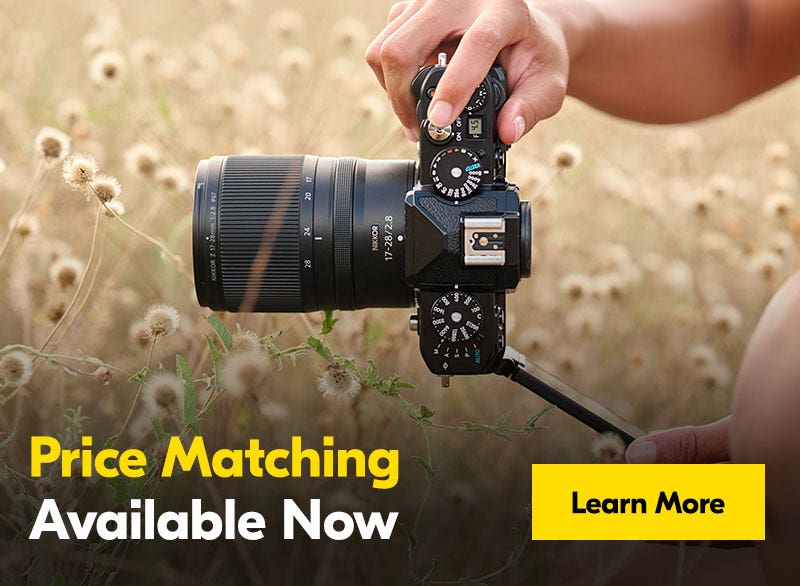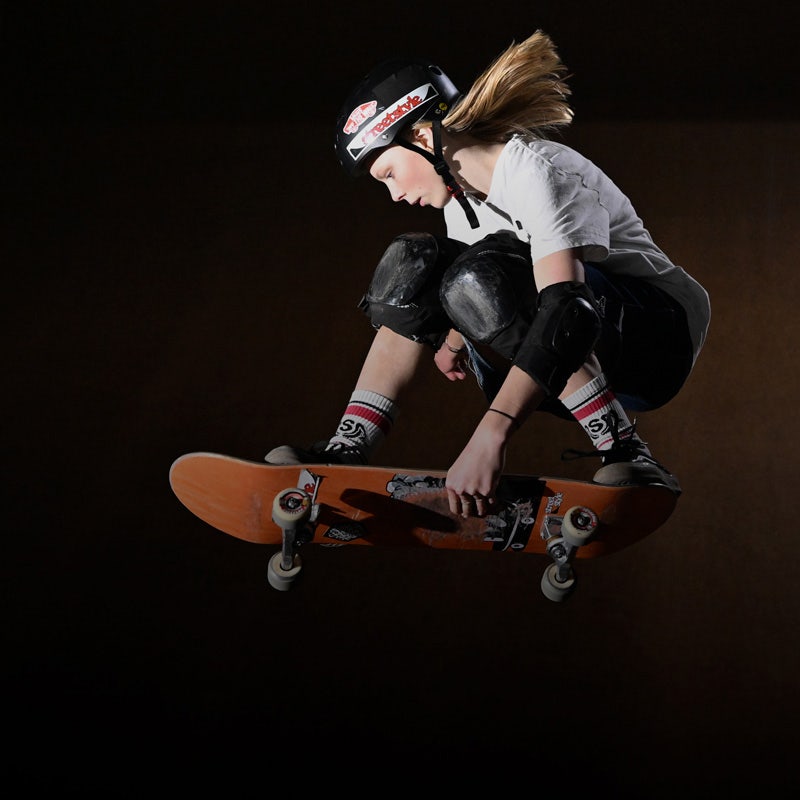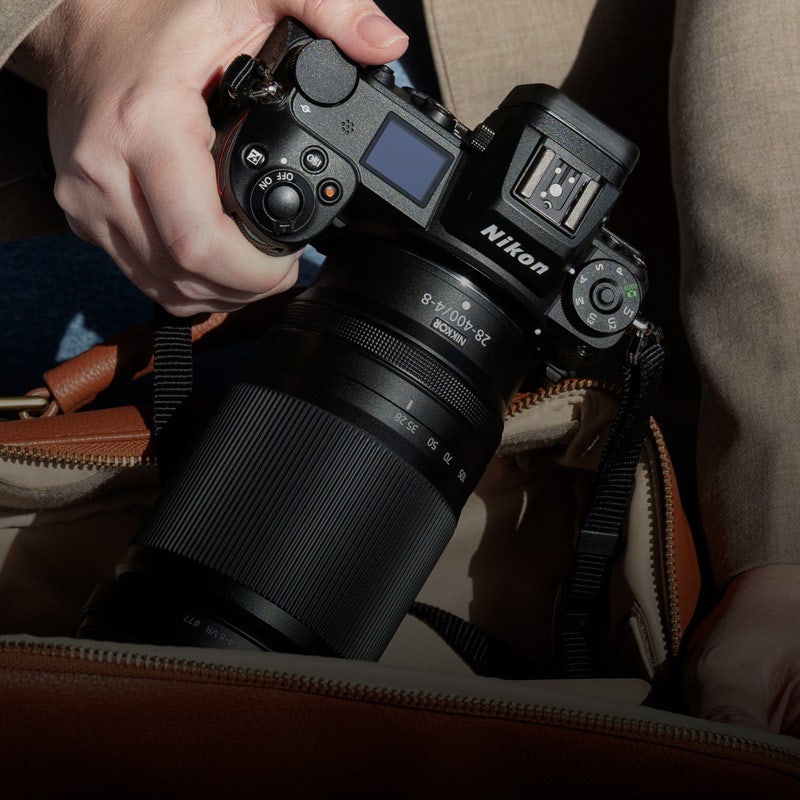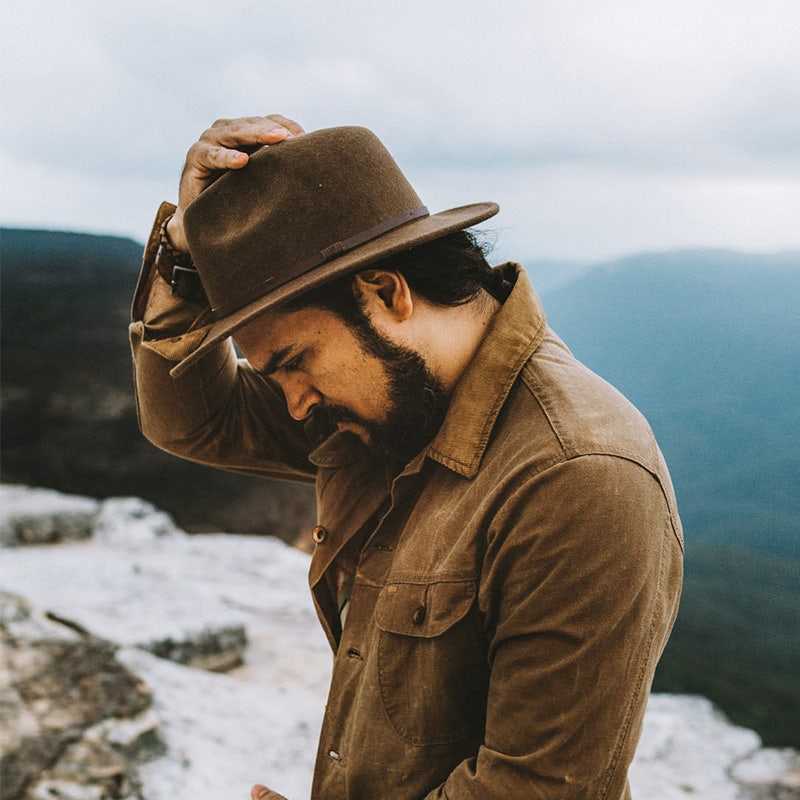A Trent White photo forces the past to converse with the present about a better future.


Rockhampton’s Trent White doesn’t merely take photos. He takes his subjects and audiences on profound, often life-altering journeys. A proud Dharumbal - Yiman man, White creates a space where Aboriginal and Torres Strait Islanders from all walks of life can discover, negotiate and/or assert their identities. His work interrogates our national history, allowing his subjects to not only take back who their ancestors were rarely allowed to be, but who they themselves weren’t even aware they were.
In a three-year period, White has gone from novice photographer to one of Indigenous Australia’s richest artistic voices. Building upon his background in education, he has used his camera to not only preserve Indigenous culture as a whole, but also to re-establish the complex differences and relationships between mobs and mentalities. Aesthetically, his work is as pleasing to the eye as it is potent to the spirit, giving the use of traditional dress, paint and pose a 21st century face.
It’s only natural that we wanted to hear the story behind the man who allows so many to tell their own.
How did you get started in photography?
I was involved in teaching culture to the youth, or pretty much anybody… running a few programs, but I kept hitting roadblocks in that area.
Then one day, I decided to buy a camera because I was always out in the bush, I was always seeing beautiful country and just wanted to shoot on something better than my phone, really. So, I purchased this old NIKON D3200 off Gumtree.
I used to see a lot of the Aboriginal and Torres Strait Islander photos through social media and there was probably a bit of the competitor in me that said “you know what, I think I can do a better job!”.
When I decided to go down that road and really learn a lot more about cameras, my biggest thing was about the difference in Aboriginal communities and different tribes. When I used to walk into Indigenous family homes, we’ve all got that kind of ‘section’, where you’ve got your artefacts; boomerangs and stuff like that, and then I’d look at another wall and see the nice family photos all dressed up in nice [Western] clothes. I started to think “how come we’re not getting photos that represent who we are, and our clan groups and tribes?”
So that’s something I really wanted to change. I thought “you know what, I bet I can really start to fill homes with these images of who we are and where we come from”. Because a lot of our paint styles and stuff like that really go back to who we are as a tribe and a clan. Like you might see a paint style and go “you must be a Dharumbal person, that’s a Dharumbal design.” Or “you must be Wakka Wakka, because that’s a Wakka Wakka design”. These different designs are a way to depict who you are and where you belong. That’s what I wanted to capture.
How long ago was it when you picked up that ol’ D3200?
That was three years ago.
Only three years ago? Wow. I know you said there was a bit of competitiveness involved in your initial decision to start your photographic journey, but do you remember what ignited your passion for the craft?
Yeah, I still remember the moment. I was always out bush, photographing landscapes. I loved landscapes, always loved photographing them. But I made my mind up one afternoon that I want to do my people. The next afternoon, I took my daughter out. I think she was probably about 13 at the time. Her mother painted her up and that was the first time I really photographed anybody and it was straight up in that painted-up style. That was the moment where I said “this is what I’m going to do. This is what I’m going to show the world”.
It felt right?
It felt right. It felt good. It felt, you know, like a lot of people needed to know this: the differences between clans and tribes… a representation of us and our true identities.
I’m still amazed it’s only been three years because of the quality of your photos, but can you tell us a bit about your journey from that afternoon photographing your daughter and now, where you’ve become so established?
Hard work. Hard work has been the biggest thing. After that day of photographing my daughter, I’d be spending like 18-20 hours a day on YouTube or Google. I put in some big days, big nights, learning different things. I was into natural light but when I saw artificial light, I was so attracted to that and I wanted to use it when capturing our mob.
So, I jumped straight into it. Sometimes it felt like I hadn’t left the house for a full week. I was sleeping, eating and breathing photography and just learning everything there was to learn.
And it sounds like you didn’t have to force that process?
It was a passion that just came over me. It was just so strong. Even though I was tired most of the time, I was just so into it. I’d watch something, then I’d go outside… and just practice. Practice, practice. I was using objects like oranges, flowers, anything that I could find. And people, of course. The only time I’d really leave the house was to practice something that I’d been watching and learning.
My mindset was that I wanted to put in that work that most people weren’t.
And it paid off.
Yeah, exactly. If you said to me that you’re spending 17 hours working on your photography, I’ll stay up 20. Because I was so determined and I still am. I think that’s why I’ve moved forward so quickly, because of my determination and hard work.
The journey has taken me to meet people that I never thought I’d meet, from just people in communities to those with high profiles like Taliqua Clancy – the only Aboriginal beach volleyball player, who recently won gold for Australia. Then, people like Willie Tonga and Kotoni Staggs. Meeting these people… they know who you are. They’re like “you’re that fella that takes those photos, hey?” And I’m like “yeah”, and they’re wanting to get a photo with me!
It’s opened up so many opportunities for me even like public speaking and universities looking for inspirational talks with their students. I remember doing a Zoom talk for 50-oodd catholic education teachers on my journey and culture. A power station recently bought some images from me and wanted me to do a talk as part of their reconciliation plan. Just amazing… some of the things I’ve done and people I’ve met.




Images by Trent White
Your photography takes on additional meaning, allowing your subjects to negotiate their struggle with identity, can you tell us a bit about that process?
What people have got to realise is that a lot of Indigenous people are on their own journey with their culture and identity. Some know more than others, depending on their pasts and generations. They could be stolen generation mobs. Some of these people had ancestors that had to lie and say they were from New Zealand or India, so they’d grow up thinking they were Indian. Their ancestors had done so as a way to hide from authority, a way of not being taken. So, there’s a lot of breakdowns of culture and identity.
And then there’s mixed races. Because you know, due to colonisation, Aboriginal and Torres Strait Islanders come in all shapes and sizes and colours. From the people I photograph – some know nothing of their heritage, some know a little bit and some know a lot. Everyone’s on this different journey.
Here’s a bit of a story that gives you an idea of what happens. If I approach somebody or they approach me wanting a photoshoot, what starts to happen is they’ll start to ask their family “well, what’s our paint style” or “how do we dress?” or “who are we and where do we come from?” So, in the week leading up to the photo shoot, they might learn so much about themselves that they didn’t before. The shoot opens up a conversation between them and their family.
A prime example is with Courtney Hodder, a Perth girl who plays for the Brisbane Lions. When she came to the shoot she said “I asked my family questions that I’ve never asked before”. It took her 20 years to ask her father those kinds of questions. What a lot of people don’t see is the feeling that these people go through behind the scenes.
And do you ever touch base with your subjects down the track and find that they’ve gone deeper with those questions? Deeper into their roots?
Yeah, that happened with Courtney. She had great success this year with the Lions – they actually won the grand final in South Australia. Her Instagram post at the time mentioned how proud she was of her family and her tribe and her people. All this information she was providing, she didn’t know before the photoshoot.
Oh, man. I’m starting to get a bit teary.
If you were to go through her Instagram before, she never spoke about it. So, I was a bit teary too because I felt I had made a difference there… with her.
You must feel honoured.
Oh yeah, very honoured. Very honoured.
The term ‘cultural preservation’ is often used in reference to your work. I wanted to get your take on that term and how photography can be used to preserve culture?
I mentioned art style. An example there is regarding ochre. People would ask “where do you get that ochre?” And I’d say “oh, I get that from my country”. Then they’d say “oh, I don’t know if we’ve got that on our country”. I’d say “have you looked?”. They’d say “I wouldn’t know where to look”.
So, they start to look for ochre on their country which sparks a conversation on the history of ochre being bartered across tribes. Not everybody’s country has ochre so that goes back to trade routes. They’d be like “we had trade routes for ochre?” And I’d say “yes, we had trade routes for ochre”.
That’s an example when it comes to colour. Then there’s the preservation of our body and sign language that doesn’t get spoken about at all. Not only did we speak, we had sign and body language. That’s a conversation within itself.
Someone might come to a shoot dressed in a grass skirt and I’ll say “how do you mob make that?” They’ll say “we make it out of this grass” and I’ll say “ah, well our mob uses this grass”. So, through the process of these shoots, there’s preservation of culture and the differences within our culture – the resources between countries. The same happens with weapons… boomerangs, spears. There are just so many aspects to preserve.
For those who don’t know much about it, what meanings do different paint styles represent? Or are they merely kinds of signatures?
Well, there’s a couple of basics. A lot of clans up this way will only use white during ‘sorry’ business. Then with our mob, there’s red and white which used to mean that we’d be going to war. That would probably have involved a dispute with a neighbouring tribe over a boundary or some other business.
And these days, would red and white still be worn if there’s not the same kind of disputing going on?
When it comes to my mob, and my family, we wear red and white now more as education and ceremony. It’s a way for us to educate and explain why we’d be painted with these colours. The biggest thing I’ve noticed when we do this is that you hear a lot of “ohs” in the crowd – as in, they didn’t know that. So, as we’re dancing, we’re constantly educating.
When it comes to your work, one of the first things one notices is that the poses of your subjects are quite unique. You say that a many of your subjects have never been photographed in their traditional dress and paint – so how do you go about making them feel relaxed and confident enough to step outside their comfort zones?
Yeah [chuckles], that’s an art itself and something that I wasn’t very good at when I first started. I knew what I wanted to do and I knew what I could offer. I knew that I could get them to pose in ways that a non-Indigenous photographer wouldn’t know. I knew that would be a strong point and that Aboriginal people could respond to that certain stance or body language because they’ve seen it but it just hasn’t been highlighted.
But getting that comfortability in a short amount of time comes down to communication and learning how to quickly settle someone down. One of the first questions I’ll ask is if they’re nervous. Most people are very honest and will say “I’m actually petrified, I don’t know what’s going on”. I’ll know straight away that I’ll have to work quickly with this person.
I learned little tricks to take the focus off the photography – just getting into a conversation about something else. You know, like what’s going on in the world today, something I’d seen in the news the night before. It gets them used to hearing my voice and being in my presence.
I also reassure them that they don’t really have to do anything other than stand there and I’ll take care of the rest. Then they’re like “oh yeah, I can handle that.” I’ll get them to stand there, I’ll get my settings and then I’ll start to mold their bodies like a piece of Play Doh. I want you like this, I want your arm there, I want your hair back like this, your eyes like this, your lips like this. They then get that confidence from thinking “okay, I really don’t have to do anything but what he tells me to do”.


Image by Trent White
Do you have a favourite or memorable image, or favourite/memorable story behind a particular image?
I remember photographing an elder here in Rockhampton; someone I’ve known all my life. She was 82 years of age and it was the first time she’d ever been painted-up in her life. And I felt so honoured just to be there when that was taken because in 82 years she never knew or got to feel what it was like to look like her ancestors. That was a magical and strong moment for me.
She was one of those ladies who had to hide her identity so she wouldn’t get taken. She was from that era when she could have been taken. She’s Aboriginal and South Sea Islander and South Sea Islanders come from Vanuatu. She dealt with racism and had to keep things quiet at times. I really felt for her.
When she said she’d never been painted-up in her life, I was like “you’re gonna make me cry now” and she ended up consoling me! She had a smile from ear to ear; she loved every minute of it. Now she goes around and shows everybody the photo on her phone.
It obviously meant a lot to her.
To her and her family. She’s got granddaughters that are well-known journalists and they couldn’t thank me enough. What it meant to her family was incredible and it made me feel really good too.
It really gets into your heart, doesn’t it?
Yeah, it does. Another one I wanted to share with you, when it comes to getting into your heart, is when I photographed Aboriginal and Torres Strait Islander kids in care. In Rockhampton, we’ve got over 200 kids in care. I had a shoot with a family, with seven siblings. They all showed up in separate cars. Each sibling lived with a separate foster carer.
I remember having a conversation when we started. I asked one of the kids “oh, what tribe are you?” and he gave me his address! He had no idea who he was. His older sisters looked at me and shrugged their shoulders. I thought to myself, what am I going to do here?
The older siblings, probably about 14 or 15 years old. Their father had passed away a few years back. After we got talking, they started remembering conversations with their dad, like “remember when Dad said this or Dad said that?” So, it opened up this conversation for them. One of them said “I think we’re from down Cunnamulla way.” And I was like “ah, okay”.
So, we started painting-up these kids and I took the photos. At the end, I asked the foster carers to go away for a bit and they went over to their cars. I said “kids, I just want a moment with you all”. It was getting just on dark and we were sitting in a grass paddock.
I said “you know, what you kids have done today has just been unbelievable”. I reassured them that they were strong Aboriginal people. I told them I’d never forget this for the rest of my life. I told them that “if you ever see me, you just yell out to me, because I’ll remember you”. I told them to keep their heads up.
And then I had to watch them all go off in seven separate cars. I tell you what, I cried all the way home. I couldn’t believe what I’d just been a part of, and also, I couldn’t believe the struggle for identity. The only time they really catch up is if it’s at a birthday of one of the siblings, if that. But, for them to be together for that time for that shoot was just incredible. An incredible moment.
If you could offer three general tips to photographers, what would they be?
Enjoy it, work hard, and work hard on the basics.
If right now, we were to open your gear bag, what would we find?
You would find a NIKON Z 7 and all prime lenses. A 105mm prime. An 85mm prime. A 50mm prime. A 35mm prime. That’s what you’d find in my kit. The 85mm and the 50mm are from the Z series.
What does the future hold for your craft?
I’ll keep doing as I’m doing now, I’ll keep educating people, I’ll keep travelling a lot to make myself available for people to be photographed on their country - but I do have future plans. I’ve got a goal of shooting the most influential Aboriginal and Torres Strait Islanders in the world – Cathy Freeman, Jessica Mauboy and the list goes on. I’d like to highlight them because when they get up there and do it, they give strength to other people in community to do the same.
It’s like with Willie Tonga. I’m trying to get more men. I said to him “when these young men see you do this, you give them strength to not be shy or ashamed to get photographed in a traditional way”. That’s the goal there.
I also want to help Indigenous photographers. I want to encourage more Indigenous people to take up the camera and help bring them along into spaces like the AFL and NRL and into other creative industries. Like with Indigenous fashion week – where Indigenous photographers are given the opportunity to photograph some of the most prestigious things we’ve got going in this country.
And of course, to keep telling our own story.





